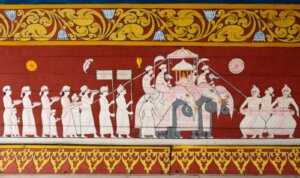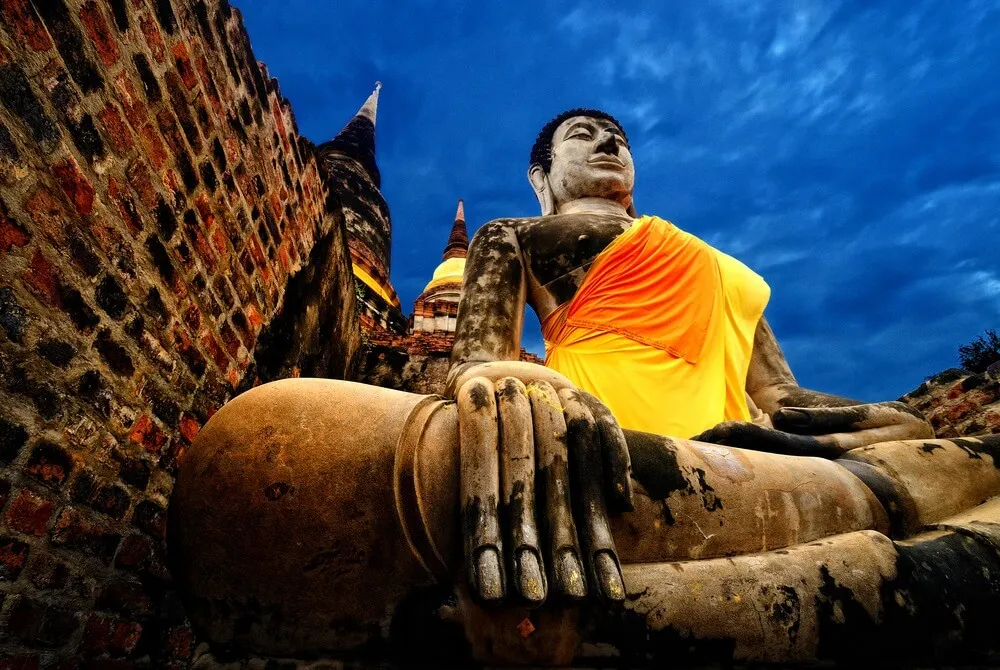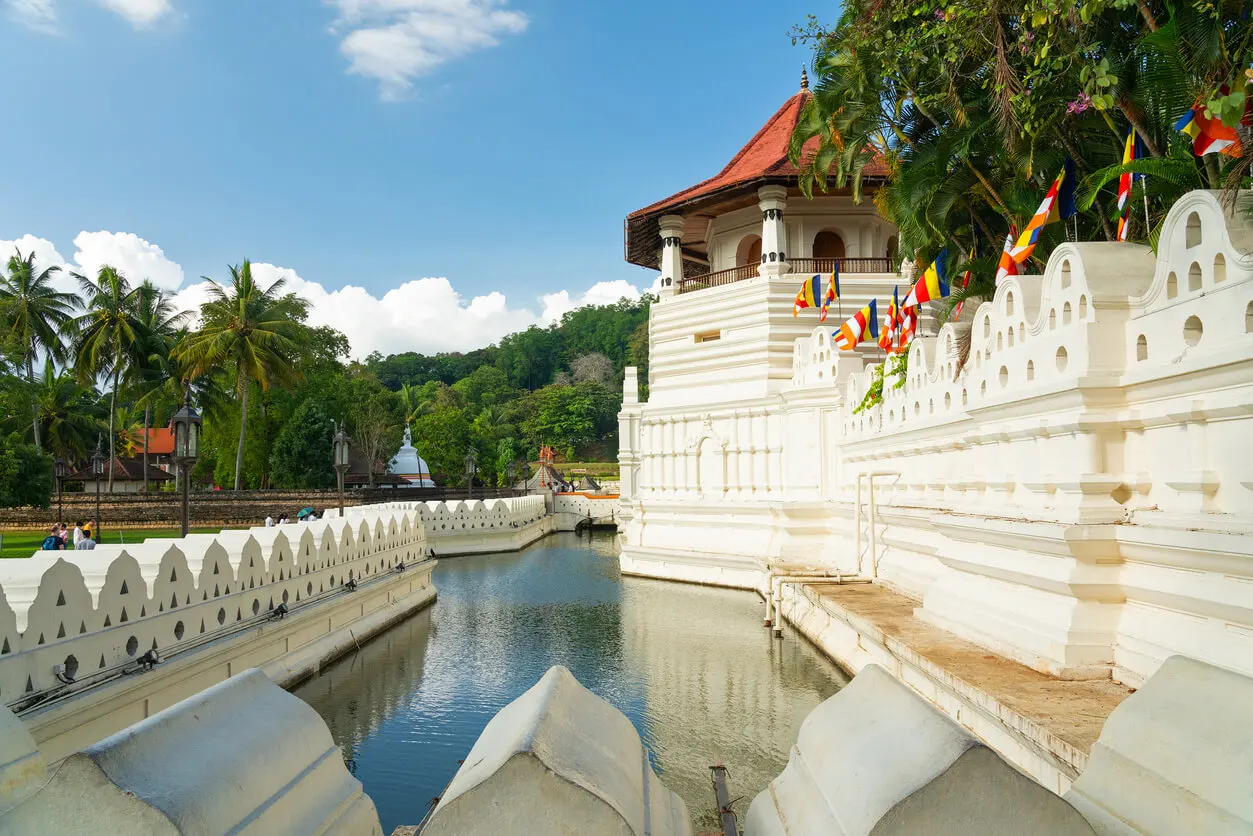Discover the Legend of the Buddha's Tooth and its Temple


Written and verified by the philosopher Maria Alejandra Morgado Cusati
The Sri Dalada Maligawa or Temple of the Buddha’s tooth is an architectural complex located in the city of Kandy, the capital of Sri Lanka. Inside is a shrine that holds one of the most important relics of Buddhism: the left canine tooth of Buddha. It attracts thousands of devotees and tourists from all over the world.
This relic, which is only 2.5 cm, is more than 2,500 years old. In fact, many interesting stories have been told about it. Let’s take a look at some of them.
The legend of Buddha’s tooth
According to legend, when Gautama Buddha died in 483 BC, his body was cremated and his ashes were then distributed to four different destinations around the world. There, different temples were built for the veneration of the monk.
During this time, one of his disciples found a piece that was not burned among the ashes: a tooth of Buddha. Convinced that it was an object of great value, the disciple gave it to the king of Kalinga, a region located in eastern India, to be venerated.
We think you may also enjoy reading this article: Discover the Interesting Relationship Between Buddhism and Mindfulness
The conflicts surrounding the tooth
From then on, different stories began to be forged about the Buddha’s tooth. One of them claims that whoever possessed the tooth would have the right and power to rule his territory. Therefore, as expected, disputes over the relic began.
In the 4th century AD, 800 years after the Buddha’s death, the tooth was in the hands of King Guhaseeva of Kalinga, who had converted to Buddhism and began to worship the relic. However, to avoid conflict, Guhaseeva decided to hide the tooth forever by sending it to a hidden place (in modern day Sri Lanka).
To do so, the king gave the Buddha’s tooth to Princess Hemamala, who moved it to its new destination. Legend has it that Hemamala, accompanied by Prince Danta, hid the relic in her hair as an ornament to go unnoticed. Thus, together they left India through the Ganges and reached the north of Sri Lanka to hide the tooth.

The arrival of the tooth in Sri Lanka
King Kithsirimevan received the sacred relic from the hand of both princes and, with great veneration, built a temple in his own palace to house it. Thereafter, he ordered an annual festival (Esala perahera) to be held in honor of the tooth.
However, as time went by, the Buddha’s tooth changed owners and location. Conflicts still raged over the possession of the relic.
It’s said that at the beginning of the 16th century, the tooth fell into the hands of the Portuguese, who charged a heavy ransom for its return. They hid it in the city of Kandy itself.
Later, due to good relations between the locals and the Dutch settlers, it was decided to build a temple to guard the tooth. Today, this temple is known as the Sri Dalada Maligawa.
Without knowing if the Buddha’s tooth is really there or not, the temple remains one of the most visited tourist spots in Sri Lanka. The relic is kept in a chamber surrounded by seven gold stupas set with precious stones, and the doors of the hall are carved in ivory.
This relic is considered a symbolic representation of the Buddha’s life, so it receives numerous offerings and is the subject of rituals and ceremonies. The Esala perahera festival is still celebrated every year.
Like this article? You may also like to read: Micromeditation: What It Is, Its Benefits, and How to Practice It
The Buddha’s tooth procession
The tooth is at the center of Kandy’s social life and is the main feature of the town’s biggest festival: a 10-day annual celebration held between July and August to honor the Buddha.
The attraction is the nightly parade of elephants dressed in embroidered robes and illuminated with light bulbs. The procession is led by the largest elephant, which has the honor of carrying a heavy golden palanquin in which the relic is carried on its back.
Only during this festival does the Buddha’s tooth leave the temple and wander through the city. However, it’s said that a backup copy of the relic has been used, while the original is guarded inside the building.
This celebration represents an important cultural and economic event, as this is the key moment in the entire tourist calendar of the city of Kandy. It’s one of the most important days in Sri Lanka.

The Buddha’s tooth today
Today, the tooth relic is highly protected and praised by thousands of people. However, skeptics generate debate as to whether the tooth is really there, as it’s kept in a glass case where it can’t be clearly seen.
Even so, the legend of the Buddha’s tooth continues. It remains an important symbol for Buddhism.
All cited sources were thoroughly reviewed by our team to ensure their quality, reliability, currency, and validity. The bibliography of this article was considered reliable and of academic or scientific accuracy.
- Siderits M. Buddha [Internet]. Californoa: Stanford Encyclopedia of Philosophy; 2019 [consultado 21 de junio de 2022]; Disponible en: https://plato.stanford.edu/entries/buddha/
- Sri Dalada Maligawa [Internet]. Kandy: Sri Dalada Maligawa; 2022 [consultado 21 de junio de 2022]; Disponible en: https://sridaladamaligawa.lk/
This text is provided for informational purposes only and does not replace consultation with a professional. If in doubt, consult your specialist.








